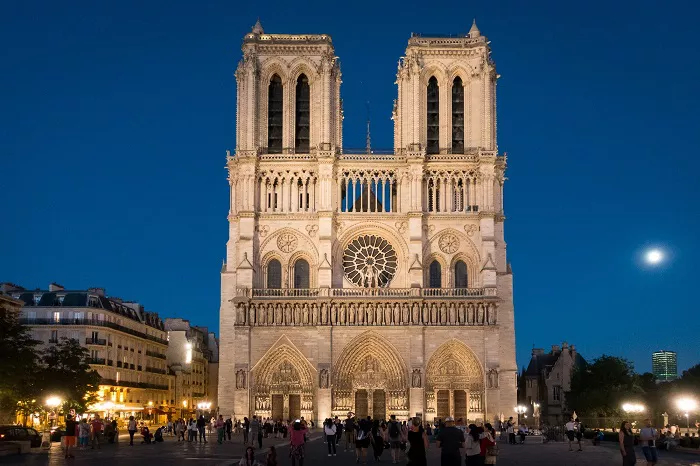PARIS — More than five years after a catastrophic fire tore through Notre-Dame de Paris, the iconic cathedral has once again opened its doors to the public, drawing thousands of visitors eager to witness the results of an ambitious, multibillion-dollar restoration project.
The fire on April 15, 2019, which engulfed the roof and toppled the historic spire, shocked millions around the world who watched the destruction unfold live. Initial assessments feared near-total loss, but a massive recovery effort has steadily brought the structure back to life. The interior officially reopened on December 8, 2024, although significant work continues, with cranes still towering over the site.
On Easter Sunday 2025, crowds of tourists and locals alike gathered in long lines to attend mass or catch a glimpse of the progress. The interior—larger than a football field—now glows with light reflected off oatmeal-colored walls and soaring vaulted ceilings. This transformation is the result of a controversial cleaning technique using a latex solution, which stripped away centuries of soot and smoke.
The French government, which owns the cathedral, pledged in 2019 to restore the building to its original form within five years. Though that deadline was narrowly missed, restoration has stayed largely true to its historical roots. However, some modern updates have been introduced, including a new bronze altar, baptismal font, and lectern—choices that have stirred debate but generally avoided controversy.
Key architectural and artistic elements were miraculously spared. The cathedral’s three famed rose windows, dating to the 13th century, survived the blaze. These masterpieces are part of a broader system of stained glass supported by flying buttresses, a revolutionary Gothic feature that allows for large openings in the walls. The cathedral’s 8,000-pipe organ was also preserved and has been meticulously restored, with toxic lead dust from the fallen roof carefully removed.
Equally significant was the rescue of Notre-Dame’s treasured religious relics. These include a fragment of the “Crown of Thorns,” a piece of the crucifixion cross, and a nail from the cross—relics revered by Christians around the world. These artifacts were evacuated during the fire by a human chain of firefighters and police and housed temporarily in the Louvre. They have now been ceremoniously returned and are displayed in a newly built reliquary. Public viewings are held on the first Friday of each month.
Despite the heavy foot traffic, recent visitors have described the cathedral as surprisingly serene. Many appeared awed and reverent, quietly taking in the transformed space—a reflection, perhaps, of the public’s appreciation for the dedication and craftsmanship that has gone into the restoration.
More than 2,000 artisans, including sculptors, stonemasons, carpenters, and ironworkers, have been involved in the reconstruction. While the interior has reopened, full completion of the project is projected for 2027.
Historic Timeline of Notre-Dame de Paris:
- 1163–1260: Construction of the cathedral in French Gothic style.
- 1789: During the French Revolution, much of the cathedral’s statuary and decoration was destroyed; the building was temporarily repurposed as a warehouse.
- 1804: Napoleon Bonaparte crowned himself Emperor of France inside the cathedral.
- 1831: Publication of Victor Hugo’s The Hunchback of Notre-Dame sparked public interest in restoring the neglected church.
- 1844: King Louis-Philippe ordered a major restoration, including the construction of a grand spire.
- 1991: An extensive 10-year restoration project began to celebrate the cathedral’s 800th anniversary.
- 2019: A devastating fire destroyed much of the roof and the spire; emergency crews prioritized saving the iconic towers and their massive bells.
- 2021: Structural stabilization and cleanup concluded, allowing reconstruction to commence.
- 2024: Roof completed in March; massive tower bells returned in September; interior reopened in December with restored organ music filling the sanctuary once again.
- 2025: Restoration continues, with full completion expected by 2027.
As Notre-Dame enters this next chapter, it stands as a symbol not only of French heritage but also of resilience and collective will. Its return is being celebrated not just as the recovery of a monument, but as the rebirth of a living place of worship and culture.

